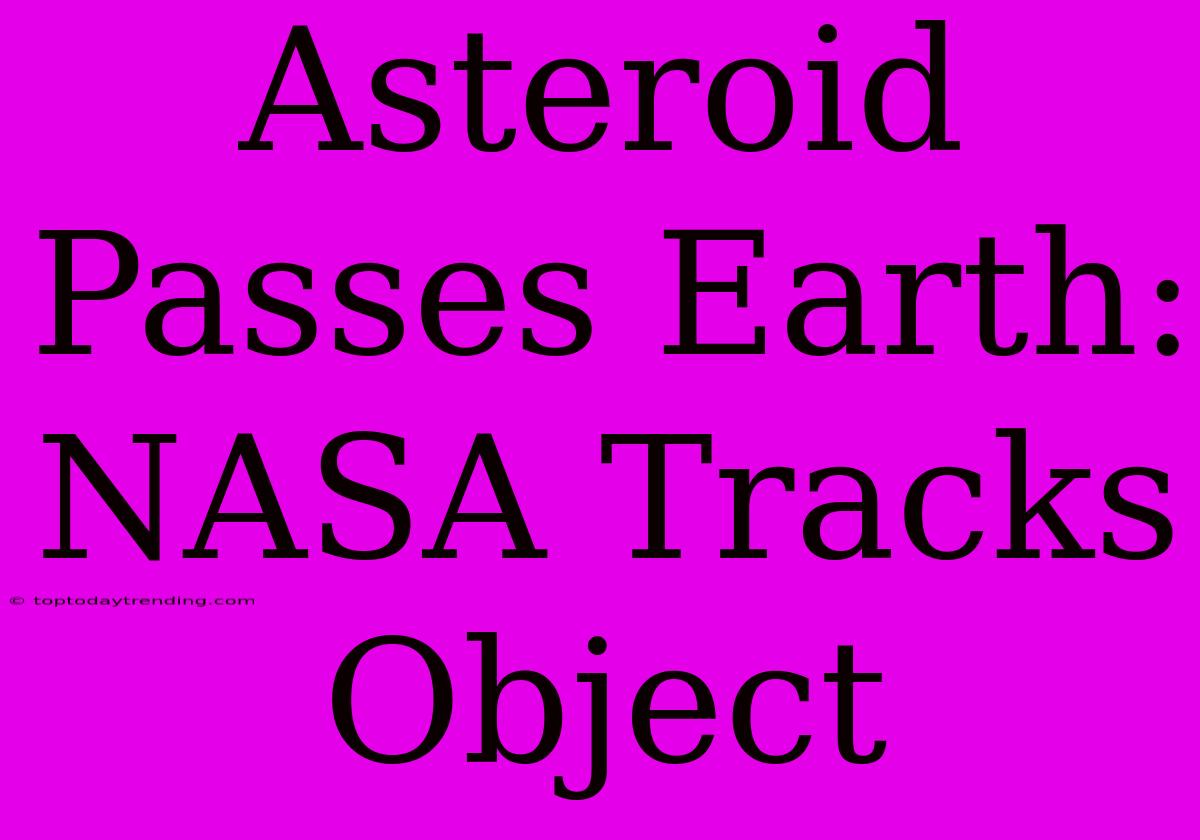Asteroid Passes Earth: NASA Tracks Object
An asteroid the size of a school bus passed Earth on Friday, August 4, 2023, at a distance of just 150,000 miles.
This close encounter, while not posing any immediate threat, highlights the importance of NASA's constant monitoring of near-Earth objects.
What We Know About the Asteroid
The asteroid, officially designated 2023 OE, was first discovered by astronomers on July 25th.
Here's what we know about it:
- Size: Roughly the size of a school bus.
- Distance: Passed Earth at a distance of 150,000 miles, which is about 60% of the distance between Earth and the Moon.
- Speed: Traveling at a speed of about 14,000 miles per hour.
- Impact risk: The asteroid posed no threat to Earth during its close encounter.
NASA's Planetary Defense System
This close encounter serves as a reminder of NASA's ongoing efforts to protect Earth from potential asteroid impacts. NASA's Planetary Defense Coordination Office (PDCO) is dedicated to finding and tracking near-Earth objects (NEOs).
Here are some of the key components of NASA's planetary defense system:
- Telescopes: NASA uses a network of ground-based and space-based telescopes to detect and track NEOs.
- Asteroid Tracking Systems: These systems help to predict the trajectory of NEOs and assess any potential impact risk.
- Spacecraft Missions: NASA has launched several spacecraft missions to study asteroids and test potential deflection techniques.
Why Monitor Near-Earth Objects?
Although most NEOs pose no threat to Earth, the potential for a catastrophic impact is a real concern.
Here are some reasons why it's crucial to monitor NEOs:
- Early detection: The earlier we can detect a potentially hazardous asteroid, the more time we have to develop and implement a mitigation strategy.
- Impact mitigation: If an asteroid is found to be on a collision course with Earth, we may have time to attempt to deflect it or evacuate the impact zone.
- Scientific research: Studying asteroids provides valuable insights into the early solar system and the formation of planets.
Stay Informed About Asteroid Threats
For the latest updates on near-Earth objects, visit NASA's website and follow their social media accounts:
- NASA's Center for Near-Earth Object Studies (CNEOS):
- NASA's Planetary Defense Coordination Office (PDCO):
- NASA's social media accounts: , ,
It's important to stay informed about the latest developments in asteroid tracking and planetary defense. Even though a recent asteroid passed Earth without incident, the possibility of a future impact remains a concern.
By staying vigilant and supporting NASA's efforts, we can better protect our planet from the threat of asteroid impacts.

